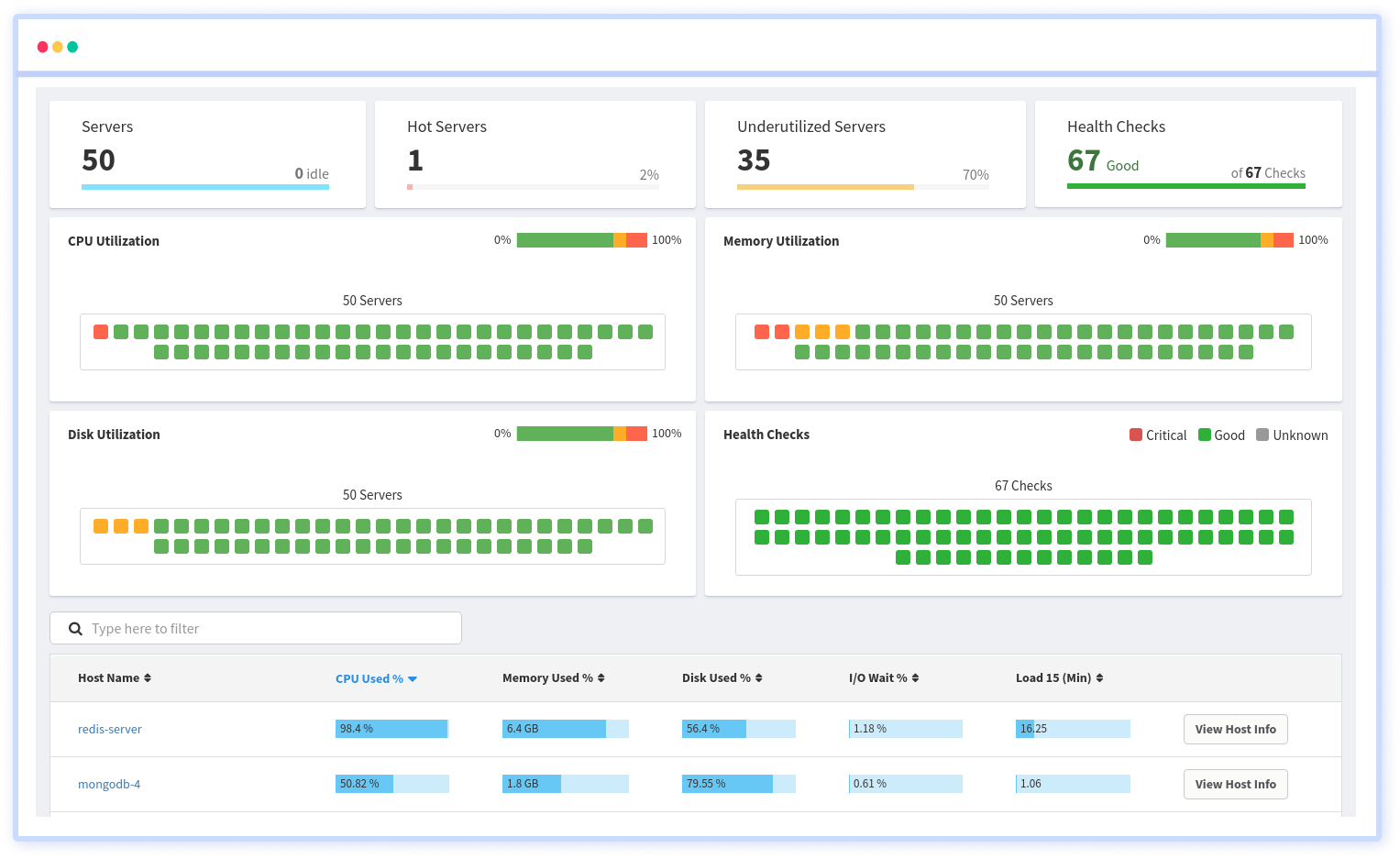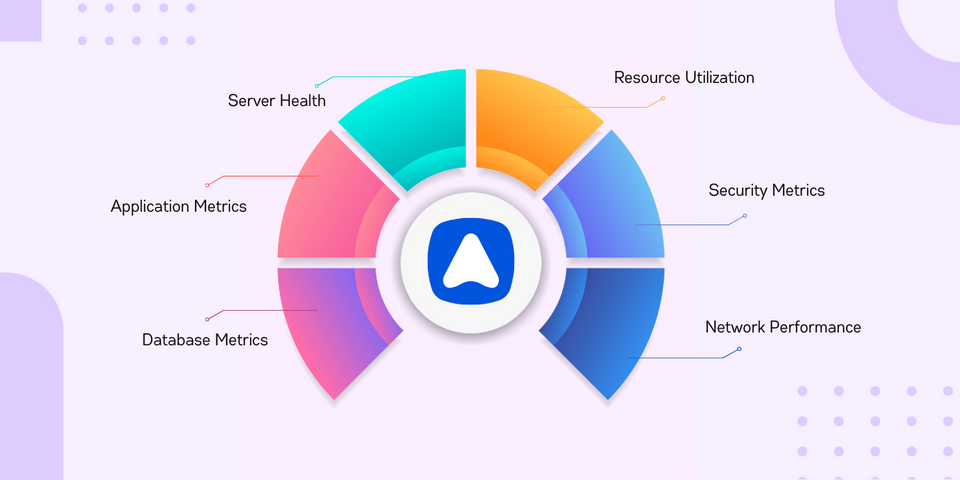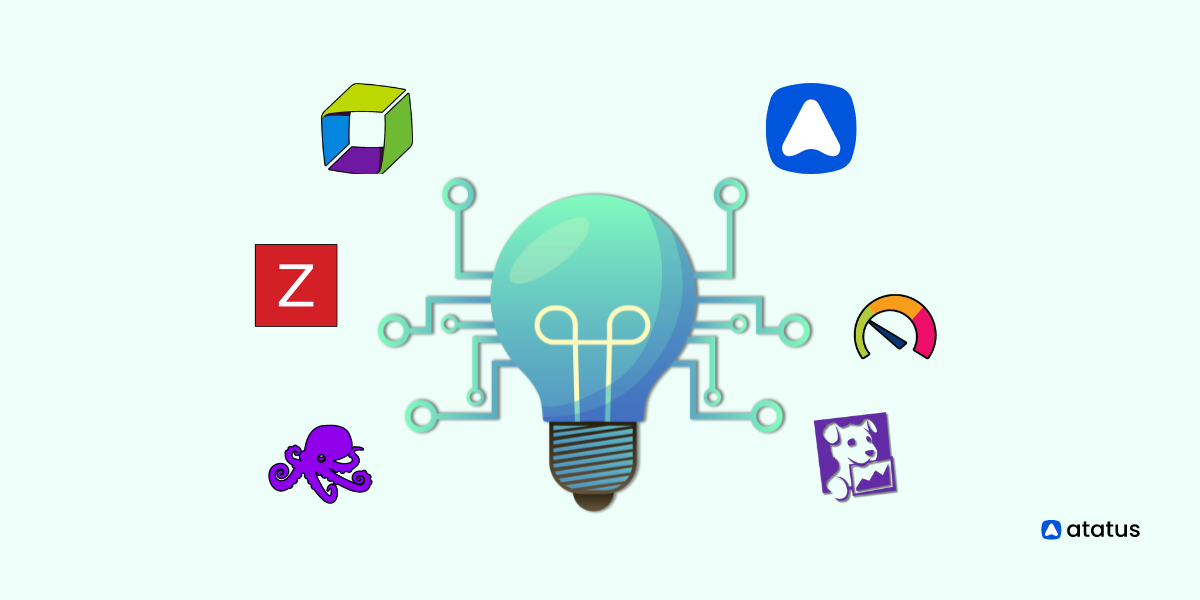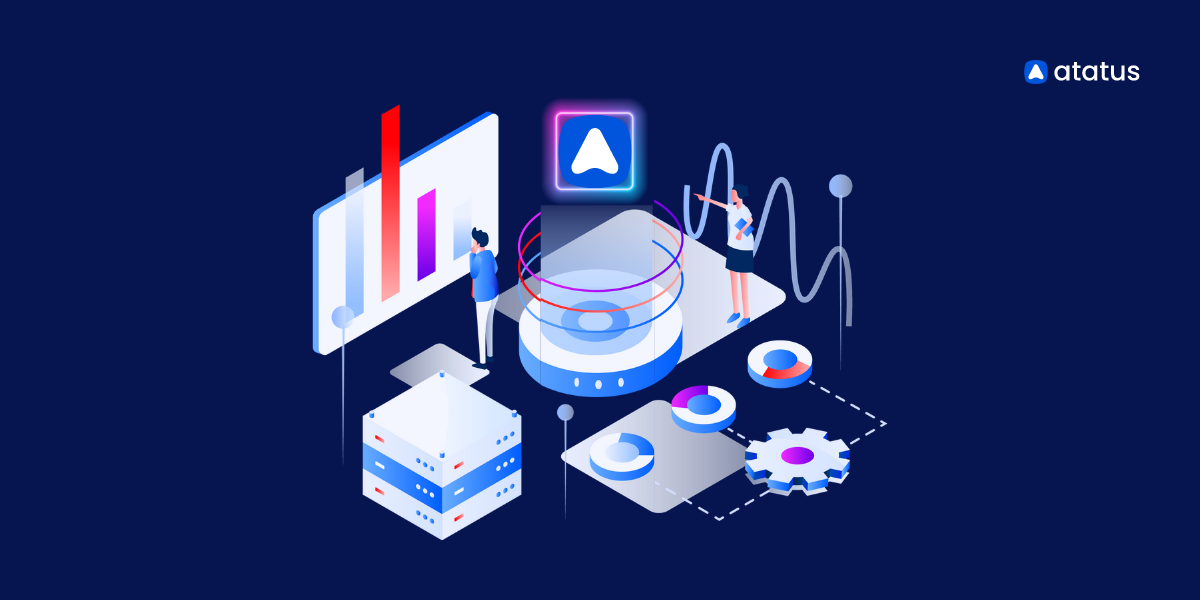Part 2: Infrastructure Monitoring Metrics
Infrastructure monitoring metrics ensure the smooth operation and optimal performance of modern-day systems and networks.
In today's highly competitive business environment, organizations rely heavily on their IT infrastructure to support their operations and deliver quality customer services.
As such, any downtime or performance issues can significantly impact their bottom line. This is where infrastructure monitoring metrics come into play, providing valuable insights into the health and efficiency of an organization's infrastructure stack.
These metrics measure parameters such as network traffic, server load, application response time, and more to help IT teams proactively identify and address potential issues before they escalate.
This article will delve into infrastructure monitoring metrics, exploring their importance, types, and best practices for implementing an effective monitoring strategy.
By understanding the role of these metrics and how to leverage them, organizations can ensure the reliability and availability of their infrastructure stack, ultimately leading to enhanced customer satisfaction and business success.
This blog is a part of three-part series of the complete guide on Infrastructure Monitoring. To get started, access Part 1: Infrastructure Monitoring - Getting Started.
Table Of Contents:
- Infrastructure Metrics to Monitor
- Why Should you Choose the Metrics Carefully
- How do we Optimize these Metrics?
- Infrastructure Monitoring Tools
Infrastructure Metrics to Monitor
In the ever-evolving landscape of technology, monitoring infrastructure metrics has become crucial for ensuring any system's stability, efficiency, and security.
Whether you're managing a small business network or a large-scale enterprise solution, keeping a watchful eye on various metrics is essential for proactive maintenance and optimal performance.
In this article, we'll explore a range of infrastructure metrics that should be monitored to guarantee a seamless and secure operational environment.
1. Resource Utilization
Resource utilization metrics are instrumental in understanding how efficiently your infrastructure handles its workload. Monitoring CPU usage, memory consumption, and disk I/O can help identify potential bottlenecks and ensure that resources are optimally allocated. By monitoring these metrics, you can proactively address resource-related issues before they impact system performance.
2. Network Performance
Network performance metrics are crucial for assessing your network infrastructure's speed, reliability, and overall health. Metrics such as bandwidth usage, latency, and packet loss can provide insights into how well your network handles data traffic. Monitoring these metrics allows you to identify and resolve communication issues between various components in your infrastructure stack.
3. Server Health
Server health metrics focus on the condition and performance of individual servers. Tracking metrics like server uptime, response time, and error rates can help ensure your servers operate optimally. Timely identification of server issues allows for swift intervention, minimizing downtime and enhancing the overall reliability of your infrastructure.
4. Security Metrics
Security is a top priority in any IT environment. Monitoring security metrics such as intrusion detection, firewall logs, and authentication attempts can help detect and prevent potential security threats. Regularly reviewing these metrics enhances your ability to safeguard sensitive data and maintain the integrity of your infrastructure.
5. Application Metrics
Application metrics provide insights into your software applications' performance and user experience. Tracking metrics like response time, error rates, and transaction throughput helps ensure your applications meet user expectations. Monitoring these metrics enables you to identify and address performance issues, enhancing overall user satisfaction.
6. Database Metrics
Databases are the backbone of many applications, and monitoring their performance is crucial. Database metrics such as query execution time, transaction rates, and connection pooling help optimize database performance. A well-maintained database ensures the integrity and availability of your data.
Other Relevant Metrics
In addition to the core metrics mentioned above, it's essential to consider other relevant metrics based on the specific needs of your infrastructure.
These may include environmental metrics (temperature, humidity), power consumption, and custom application-specific metrics. Tailoring your monitoring strategy to address the unique aspects of your infrastructure enhances overall resilience.
Why should you choose the Metrics carefully?
Choosing metrics carefully is crucial for several reasons, and their importance cannot be overstated. Metrics serve as the quantitative foundation for assessing the performance, health, and efficiency of various aspects of an infrastructure or system.
Here are key reasons why selecting and utilizing metrics judiciously is essential:
- Alignment with Business Objectives
- Relevance to Performance
- Early Issue Detection
- Resource Optimization
- User Experience Improvement
- Security Enhancement
- Data-Driven Decision Making
- Cost Management
- Continuous Improvement
- Customization for Specific Needs
Choosing metrics carefully is essential for achieving meaningful, actionable insights that contribute to the success and sustainability of an organization.
The careful selection of metrics enables informed decision-making, enhances system performance, and ultimately leads to a more resilient and efficient infrastructure.
How do we optimize Infrastructure Metrics?
Optimizing infrastructure metrics involves a combination of proactive monitoring, strategic planning, and targeted interventions. Here are tried and tested methods for optimizing the key metrics mentioned:
1. Resource Utilization:
- Capacity Planning: Regularly assess resource usage trends and plan for future needs. Adjust resources (CPU, memory, storage) based on demand forecasts.
- Load Balancing: Distribute workloads evenly across servers to prevent resource bottlenecks and ensure optimal utilization.
- Efficient Code Practices: Optimize software code to reduce resource consumption, enhance performance, and minimize strain on hardware.
2. Network Performance:
- Bandwidth Management: Implement Quality of Service (QoS) policies to prioritize critical network traffic and allocate bandwidth efficiently.
- Content Delivery Networks (CDNs): Use CDNs to cache and deliver content closer to end-users, reducing latency and improving overall network performance.
- Regular Network Audits: Conduct periodic audits to identify and eliminate network congestion, latency, or packet loss issues.
3. Server Health:
- Temperature and Environment Monitoring: Ensure servers are housed in a well-ventilated environment with proper temperature control to prevent overheating and hardware failures.
- Redundancy and Failover Systems: Implement redundant power supplies, cooling systems, and failover mechanisms to enhance server reliability.
- Regular Hardware Maintenance: Schedule routine hardware maintenance to identify and replace aging or faulty components before they cause issues.
4. Security Metrics:
- Regular Security Audits: Conduct regular security audits to identify and address vulnerabilities promptly.
- Patch Management: Keep software and systems up-to-date with the latest security patches to protect against known vulnerabilities.
- User Training: Educate users about security best practices to reduce the risk of human error leading to security breaches.
5. Application Metrics:
- Code Optimization: Continuously optimize application code to improve performance, reduce response times, and minimize errors.
- Caching Mechanisms: Implement caching strategies to reduce the need for redundant computations and database queries.
- Load Testing: Conduct thorough load testing to identify performance bottlenecks and optimize applications accordingly.
6. Database Metrics:
- Indexing: Properly index database tables to speed up query response times and enhance overall performance.
- Database Maintenance: Regularly perform maintenance tasks such as vacuuming, updating statistics, and optimizing queries.
- Partitioning: Implement database partitioning to distribute data more efficiently and improve query performance.
7. Other Relevant Metrics:
- Environmental Monitoring: Use sensors to monitor environmental factors like temperature and humidity to ensure optimal conditions for equipment.
- Power Consumption Management: Implement energy-efficient hardware and optimize power settings to reduce overall power consumption.
- Customized Monitoring Solutions: Develop or employ monitoring solutions tailored to the unique needs and characteristics of the infrastructure.
8. Continuous Improvement:
- Regular Review and Analysis: Continuously review metrics and analyze trends to identify areas for improvement and optimization.
- Feedback Loops: Establish feedback loops to incorporate lessons learned from incidents or performance issues into ongoing optimization efforts.
Remember that optimization is an ongoing process. Regular reassessment of metrics and timely interventions are key to maintaining a high-performing and secure infrastructure.
Infrastructure Monitoring Tools
As we discussed, monitoring infrastructure is important, but finding the right tools also matters. It primarily depends on your chosen tool, how well it can comprehend your products, and how feasible it is for you or your team to adopt it.
As technology has grown unprecedentedly in all dimensions in recent years, close to hundreds of start-ups and companies have developed new and innovative analytics features. Some of their products might offer you a steal deal but are unavailable for scaling up. Similarly, the others might have all features intact but not fit your pocket. So, you must choose a tool that ticks all these boxes.
We have compiled a list of premium-quality tools in all sizes and ranges to simplify the process. Check out our page on Infrastructure Monitoring Tools to learn more.
Conclusion
Choosing metrics carefully is essential for achieving meaningful, actionable insights that contribute to an organization's success and sustainability.
By regularly evaluating resource utilization, network performance, server health, security, application, and database metrics, you can proactively address issues, optimize performance, and ensure the reliability of your systems.
A comprehensive monitoring strategy enhances the stability of your infrastructure and contributes to a positive user experience and, ultimately, the success of your business or organization.
Thoughtful metric choices empower organizations to make informed decisions and drive success in an increasingly dynamic technological landscape.
With this, we are moving on to the next section - Part 3: Infrastructure Monitoring Tools. Take a look at the newest, most efficient tools now!
Infrastructure Monitoring with Atatus
Track the availability of the servers, hosts, virtual machines and containers with the help of Atatus Infrastructure Monitoring. It allows you to monitor, quickly pinpoint and fix the issues of your entire infrastructure.
In order to ensure that your infrastructure is running smoothly and efficiently, it is important to monitor it regularly. By doing so, you can identify and resolve issues before they cause downtime or impact your business.

It is possible to determine the host, container, or other backend component that failed or experienced latency during an incident by using an infrastructure monitoring tool. In the event of an outage, engineers can identify which hosts or containers caused the problem. As a result, support tickets can be resolved more quickly and problems can be addressed more efficiently.
Start your free trial with Atatus. No credit card required.
#1 Solution for Logs, Traces & Metrics
APM
Kubernetes
Logs
Synthetics
RUM
Serverless
Security
More





